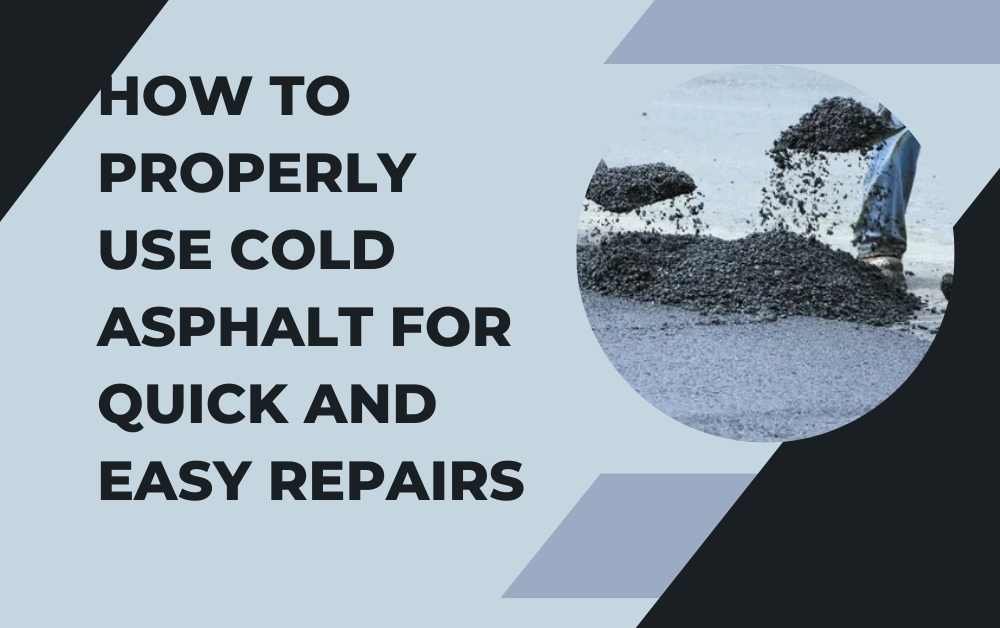How to Properly Use Cold Asphalt for Quick and Easy Repairs
Maintaining your driveway or patching up potholes in the road doesn’t have to be a hassle. With the right product and technique, you can make quick and easy repairs that stand the test of time. One such solution gaining popularity is Bituroll Cold Asphalt. In this guide, we’ll walk you through everything you need to know to properly use cold asphalt for your repair projects.
Understanding Bituroll Cold Asphalt
What is Bituroll Cold Asphalt?
Bituroll Cold Asphalt is a revolutionary product designed for convenient and efficient asphalt repairs. Unlike traditional hot mix asphalt, which requires heating and specialized equipment, cold asphalt comes pre-mixed and ready to use. It’s an ideal solution for DIY enthusiasts and professionals alike, offering ease of use without compromising on quality.
Key Features of Bituroll Cold Asphalt
- Ready to use: No need for special equipment or heating.
- Versatile: Suitable for various repair applications, including driveways, potholes, and pathways.
- Durable: Provides long-lasting repairs that withstand heavy traffic and adverse weather conditions.
- Quick setting: Allows for rapid repairs, minimizing downtime.
- Environmentally friendly: Contains recycled materials and reduces carbon emissions compared to hot mix asphalt.
Preparing for Your Repair Project
Assessing the Damage
Before diving into your repair project, take some time to assess the extent of the damage. Identify any cracks, potholes, or surface imperfections that need attention. This initial evaluation will help you determine the amount of Bituroll Cold Asphalt you’ll need and the necessary tools for the job.
Gathering Your Materials
To ensure a smooth repair process, gather all the materials and tools you’ll need beforehand. Here’s a basic list to get you started:
- Bituroll Cold Asphalt
- Shovel or trowel
- Broom or brush
- Safety gloves and goggles
- Safety cones or barricades (for traffic control, if applicable)
Steps for Proper Application
Step 1: Clean the Surface
Start by cleaning the repair area thoroughly. Remove any debris, loose asphalt, or vegetation that may interfere with adhesion. Use a broom or brush to sweep the surface clean, and if necessary, use a pressure washer to remove stubborn dirt and grime.
Step 2: Fill the Pothole or Crack
Using a shovel or trowel, fill the pothole or crack with Bituroll Cold Asphalt. Ensure the material is slightly overfilled to compensate for compaction. For larger repairs, it may be necessary to compact the cold asphalt in layers, adding more material as needed. Once the repair area is filled, use a hand tamper or compactor to compact the Bituroll Cold Asphalt. Apply firm pressure to ensure proper compaction and adhesion to the surrounding surface. Continue compacting until the repaired area is level with the surrounding asphalt.
Step 3: Compact the Asphalt
Once the repair area is filled, use a hand tamper or compactor to compact the Bituroll Cold Asphalt. Apply firm pressure to ensure proper compaction and adhesion to the surrounding surface. Continue compacting until the repaired area is level with the surrounding asphalt.
Step 4: Finishing Touches
After compacting the cold asphalt, use a trowel to smooth out any uneven surfaces and blend the repair seamlessly with the surrounding pavement. Allow the repaired area to cure according to the manufacturer’s instructions before reopening to traffic. Once the repair area is filled, use a hand tamper or compactor to compact the Bituroll Cold Asphalt. Apply firm pressure to ensure proper compaction and adhesion to the surrounding surface. Continue compacting until the repaired area is level with the surrounding asphalt.
Tips for Success
- Work in small sections to ensure proper compaction and adhesion.
- Avoid applying Bituroll Cold Asphalt in rainy or freezing conditions, as it may affect the quality of the repair.
- Store unused cold asphalt in a cool, dry place to prevent premature hardening.
- Follow all safety precautions, including wearing gloves and goggles, when handling cold asphalt.
Conclusion
With Bituroll Cold Asphalt, asphalt repairs have never been easier. By following these simple steps and tips, you can achieve professional-quality results without the hassle of traditional hot mix asphalt. Whether you’re patching up a driveway or repairing potholes on the road, Bituroll Cold Asphalt is your go-to solution for quick and easy repairs that stand the test of time.
Note :- For more stories and info like this, viraltechblogz.com is the place to be.







